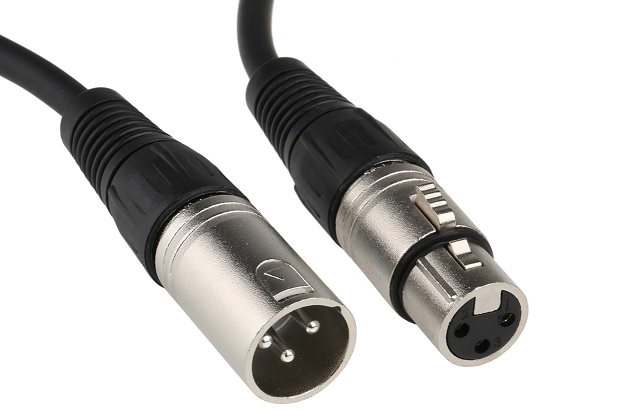In the world of audio technology, the XLR connector stands out as a fundamental component, serving as the go-to choice for professionals in the music, broadcasting, and entertainment industries. Known for its robust design and balanced signal transmission capabilities, the XLR connector comes in male and female variations, each playing a crucial role in establishing secure and reliable connections. In this article, we delve into the intricacies of XLR connectors, shedding light on the distinctions between the male and female counterparts and their applications in the realm of audio connectivity.
Understanding XLR Connectors: The Basics
XLR connectors, originally developed by Cannon (now part of ITT Corporation), are three-pin connectors designed for audio applications. They offer a balanced connection, which is essential for minimizing unwanted noise and interference in professional audio setups. The XLR male and female design includes a male and a female connector, each serving a specific purpose in the signal flow.
XLR Male Connector:
Physical Characteristics: The XLR male connector features three pins housed within a metal shell. The pins are arranged in a circular pattern, with a central pin surrounded by two outer pins.
Functionality: The XLR male connector is typically associated with the source or output end of a signal chain. For instance, microphones often feature XLR male connectors, serving as the initial point where the audio signal is generated.
Key Features:
Pins: Three pins for positive (hot), negative (cold), and ground (shield) connections.
Latch Mechanism: The male connector includes a latch or locking mechanism that ensures a secure and stable connection when mated with a female connector.
Applications:
Microphones: XLR male connectors are commonly found on microphone cables, establishing a connection between the microphone and a mixer or audio interface.
Instrument Cables: Musical instruments, such as guitars and keyboards, may utilize XLR male connectors in certain professional audio setups.
XLR Female Connector:
Physical Characteristics: The XLR female connector also consists of three pins arranged in a circular pattern. It features a receptacle or socket to receive the male connector.
Functionality: The XLR female connector is typically associated with the receiving end of the signal chain. It is commonly found on devices like mixers, audio interfaces, or amplifiers.
Key Features:
Pins: Similar to the male connector, the female connector has three pins corresponding to positive, negative, and ground.
Latch Receptacle: The female connector includes a receptacle for the latch on the male connector, ensuring a secure connection.
Applications:
Mixers and Audio Interfaces: XLR female connectors are prevalent on the input channels of audio mixing consoles and interfaces.
Amplifiers: In professional audio setups, amplifiers may feature XLR female inputs for connecting to other audio sources.
Balanced Audio and XLR Connectors:
One of the defining features of XLR connectors is their ability to facilitate balanced audio connections. In a balanced signal, the audio information is carried by two conductors: the positive (hot) and negative (cold) signals. The ground/shield acts as a reference point and helps reject external interference.
Advantages of Balanced Audio:
Noise Rejection: By carrying two signals of equal magnitude but opposite polarity, balanced connections effectively reject common-mode noise, resulting in a cleaner audio signal.
Long Cable Runs: Balanced connections are well-suited for long cable runs without significant signal degradation.
Applications in XLR Connectors:
Professional Audio: XLR connectors are extensively used in professional audio applications, including live sound, studio recording, and broadcast.
Choosing the Right Cable:
When selecting XLR cables, it’s crucial to match the connectors with the specific requirements of your equipment.
For example:
Microphone to Mixer: A typical scenario involves using an XLR male cable to connect a microphone to the XLR female input on a mixer.
Mixer to Amplifier: When connecting a mixer to an amplifier, you might use XLR male connectors on one end and XLR female connectors on the other.
Additionally, consider the quality of the cable, especially for critical applications. High-quality cables with proper shielding contribute to maintaining signal integrity and minimizing interference.
Conclusion
Audio connectivity, XLR connectors play a pivotal role in delivering reliable and high-quality sound. Understanding the distinctions between XLR male and female connectors, along with their applications, empowers audio professionals to create seamless and noise-free signal paths. Whether you’re setting up a recording studio, a live sound system, or connecting audio equipment, the versatility and reliability of XLR connectors make them an indispensable tool in the world of professional audio.
